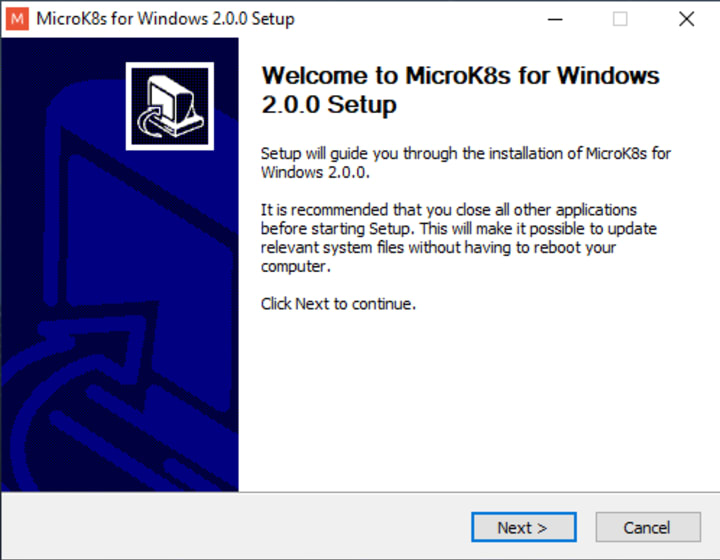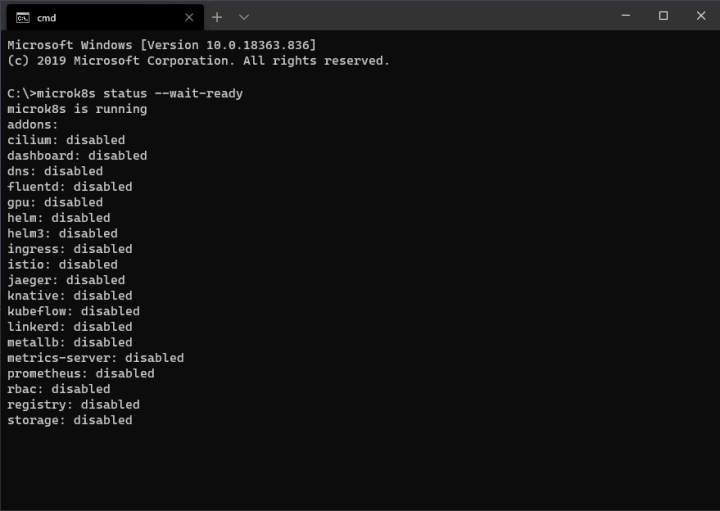wgs1
on 19 June 2019
Kubernetes on Windows: how to set up
UPDATED in July 2020 with the latest instruction set.
Are you looking for a Kubernetes solution to run on your Windows machine? MicroK8s is a lightweight, CNCF-certified distribution of Kubernetes for Linux, Windows and macOS. The single-package installer includes all Kubernetes services, along with a collection of carefully selected add-ons.
MicroK8s has a low resource footprint and can be used as a single-node Kubernetes or a multi-node cluster. This enables teams to test microservices on a small scale, develop and train machine learning models, build CI-CD pipelines or embed upgradeable Kubernetes in IoT and edge appliances.
While MicroK8s automates the typical functions of Kubernetes, such as scheduling, scaling and debugging, it also abstracts some of its complexity by pre-packaging add-ons such as DNS, the Kubernetes dashboard, and Istio. Additionally, MicroK8s follows the upstream Kubernetes release cadence, making new versions available within days of the official release.
Kubernetes on Windows setup steps
What follows here are the steps necessary to install and interact with MicroK8s on Windows, and subsequently access the Kubernetes dashboard.
Step 1: Download the installer for Windows
Step 2: Run the installer

Step 3: Open a command prompt
Press <Window Key> + R, then type ‘cmd’ and press Enter.

Step 4: Check MicroK8s status
microk8s status --wait-ready

Step 5: Enable the dashboard add-on
microk8s enable dashboard
Step 6: Access the Kubernetes dashboard
microk8s dashboard-proxy

Kubernetes on Windows summary
MicroK8s is easy to install and provides a nice way to do Kubernetes on Windows workstations. For larger-scale use cases, MicroK8s nodes can be clustered together. To read more about clustering and other advanced MicroK8s configuration, keep reading and exploring with the official MicroK8s documentation.
Useful reading
- Install a local Kubernetes with MicroK8s - tutorial
- Build a RaspberryPi Kubernetes cluster with MicroK8s
- Install single node and multi-node Kubernetes
- Kubernetes on Mac: how to set up
- For CTOs: the no-nonsense way to accelerate your business with containers
- Multipass on Windows
- How to integrate Ubuntu with Microsoft Active Directory



